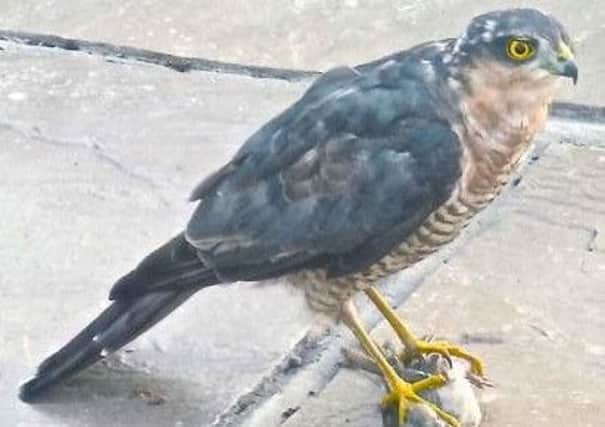RICHARD WILLIAMSON: Eartham Woods is home to the sparrow-hawk


He was lucky enough to have his camera at the ready while he was enjoying an early morning cup of tea on the patio of his home in Brooks Lane. He then achieved, in his words: ‘one of those once-in-lifetime-shots.’ He said the hawk must have been hungry when it dived in and caught the unfortunate sparrow right in front of him as it was very close.
It then waited for a few seconds to recover itself, as sparrow-hawks nearly always do, to get its breath back after such a huge output of energy and concentration.
Advertisement
Hide AdAdvertisement
Hide AdThis is a male bird, which you can tell because it has rufous cheeks and chest compared to the female which has almost white cheeks, a white eye-stripe, and a grey, barred breast. The male is much smaller too, even smaller that a kestrel. Large females can even be mistaken for adult goshawks and will easily drop a big fat wood pigeon though it may not be able to carry it away.
Having declared this one in the picture a male, there is the caution that old females of the tribe can start to become a little pink across the breast as well. But size is all, and she is always big compared to her diminutive mate. No small bird is safe from either sex, for they have the most cunning plans to achieve the daily rations. I once heard, when working as a forester in Norfolk, marking timber for felling, a mewing sound like an unhappy cat, coming from a holly bush. I kept still.
Two chaffinches, a robin, a hedge-sparrow and a great tit seemed most interested in the sound and were peering into the gloomy interior. Suddenly, out sprang a female sparrow-hawk and clutched a chaffinch in her yellow claws. All had been duped by their curiosity. This is a trick sometimes employed by twitchers to draw reluctant rarities out of hiding. It is called pishing, which describes the silly sound made through lips and teeth.
I have never succeeded with pishing but others claim they have. Another trick of the sparrow-hawk is to fly along one side of a hedge but in a lightning flick of the wings, top said hedge and surprise a small bird on the other.
With their booty they then take it to a favourite plucking post in cover, and there you could see a circle of feathers, like those circles of snail shells around a song thrush’s anvil.